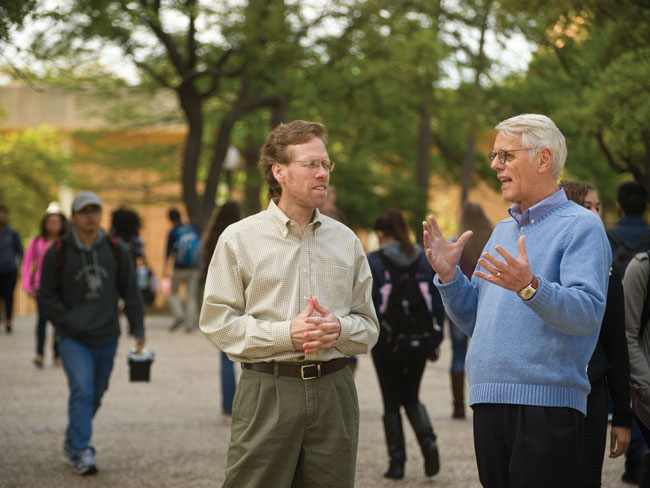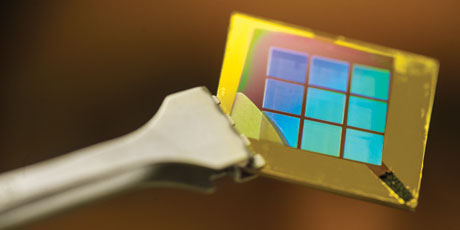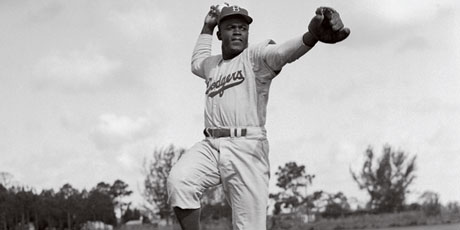Collab Confab
Innovation by the Numbers
Multidisciplinary, multiuniversity team aims to uncover the science behind group creativity and innovation

Jared Kenworthy and Paul Paulus are quantifying group thought.
If two heads are better than one, then three heads must be even better, right? That’s what a group of interdisciplinary researchers hopes to demonstrate.
Logically, it makes sense: Harnessing the power of a group of great thinkers to solve a problem should yield more impressive results. While experimental literature exists on why and how such collective problem-solving works, it mostly focuses on short-term group interactions in a lab setting. But a new study by UTA psychology faculty members Paul Paulus and Jared Kenworthy aims to quantify the dynamic nature of group creativity and innovation in long-term, real-world situations, particularly as it concerns human networks like the Internet and smartphones.
The team—which includes researchers from the University of Cincinnati, the University of Stony Brook, and Hofstra University—is investigating how factors like diversity, size, the structure of the interaction process, and the extent of interaction can influence the development of creative ideas. These factors will be coded and subjected to detailed data mining and network analyses.
“We hope to develop a broad theoretical perspective that can account for both laboratory and field data,” Dr. Paulus says. “This will involve the development of complex computational models and multi-agent models by other members of the team. Our laboratory research will then focus on testing some of the predictions that are suggested by those models.”
The team recently received a three-year, $1 million grant from the National Science Foundation’s Integrated NSF Support Promoting Interdisciplinary Research and Education (INSPIRE) program. The INSPIRE grant enabled them to expand the range and complexity of their research and offer students the opportunity to be involved with the potentially groundbreaking work.
“Collaborative innovation is a complex and still poorly understood process,” Dr. Kenworthy says. “Our findings could suggest optimal ways to structure interaction and info exchange within and between organizations or in large-scale networks.”

















